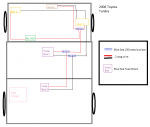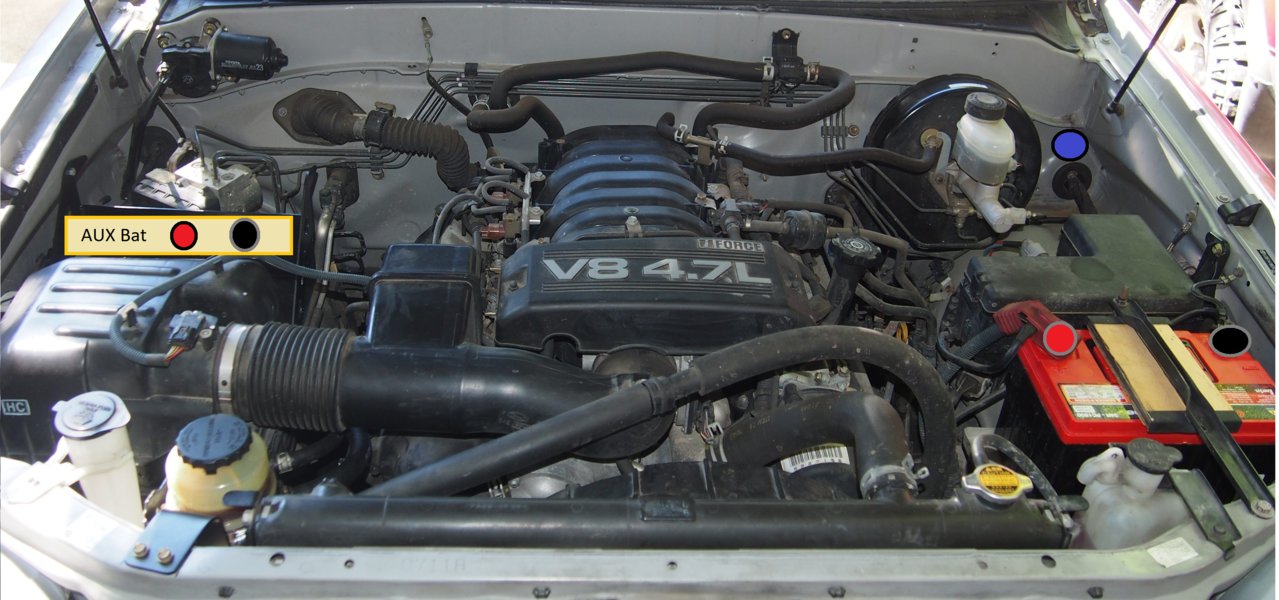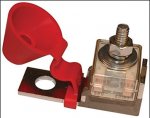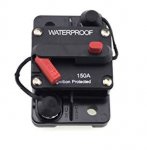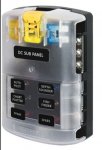Jake:
What is battery 2? Is it a deep cycle? I recommend connecting the winch to the truck's main battery 1 posts and run your truck when you are using your winch; standard practice; power the winch from your alternator through you main battery. Use battery 2 as a house battery for all the low amp, truck-off services. My WARN Zeon 10S Platinum pulls a max 465A at 10,000lb. Your Tundra winch must be at least 10,000lb and the Blue Sea 250A buss bar on battery 2 will be too small. Winches should always be direct connected to the battery terminals; if your battery 2 negative terminal came a little loose or got compromised in any way, when you operate your winch, it's ground will use whatever path it can find, possibly toasting anything you have connected to the negative buss bar. Another reason to connect the winch directly to battery 1. This is the reason that extra, low amp equipment should not be connected to the main battery negative post; big amps only!
I would connect the Blue Sea ML ACT directly to battery 2 and run your smaller amp fuse boxes discreetly from battery 2's positive. The ML ACT has a switch to allow you to manually feed battery 1 from battery 2 for emergency starting. If you use battery 2 to recharge battery one and then start your truck, you will be OK but otherwise your 250A buss bar may be too small to handle the starting amps.
What's the middle fuse box going to power? Is it in the cab or the front of the bed? I don't put high amp stuff in the cab including cabling. It's better to route any high amp cabling under the cab to the bed along the frame rails.
As for your fridge in the back, just remember that the fridge isn't on all the time as it cycles; I recall mine pulling a max 7.4A according to the manual (a Dometic CFX 75DWZ probably in freezer/freezer mode) so 2AWG will work fine for 15' of live wire length; only a 0.31% voltage drop (assuming your fridge is similar or smaller). The main reason for big gauges feeding a fridge at the back is voltage drop due to the distance from the battery; your fridge probably has a battery protection setting(s) and if the voltage drop is too great, the fridge will keep tripping. As DiploStrat noted, a lot of modern trucks don't put out 14V all the time; they have smart alternators, great for energy efficiency of the truck but not always good for charging secondary systems.
Lower amp equipment does not need ground to direct connect to the battery (no matter what the manuals suggest); it's expensive and unnecessary and can even be unsafe as described above; take a good look under your Tundra and I am sure you will find a number of factory grounds connected to the chassis at the rear of your truck (my Colorado has a very convenient one on the chassis about 1' behind the junction of the bed and cab on the driver's side. If your only intent at the back is to run a fridge, use a much smaller gauge ground from the fridge to the factory ground at the back; 10AWG would work fine for 4' of ground cable from the fridge.
In my case, my ArkPak, loaded with a 105AHr deep cycle battery, is located at the driver's side front of my cab; in order to use it as an emergency starter battery, I am considering running a 2AWG ground in parallel with the live between the two batteries, with an isolator on the live, a 150A fuse at the main battery and a 150A breaker in the bed, feeding the ArkPak. Maybe overkill.
Good luck Jake. I'll be wiring my system in a few weeks; we can compare notes.
